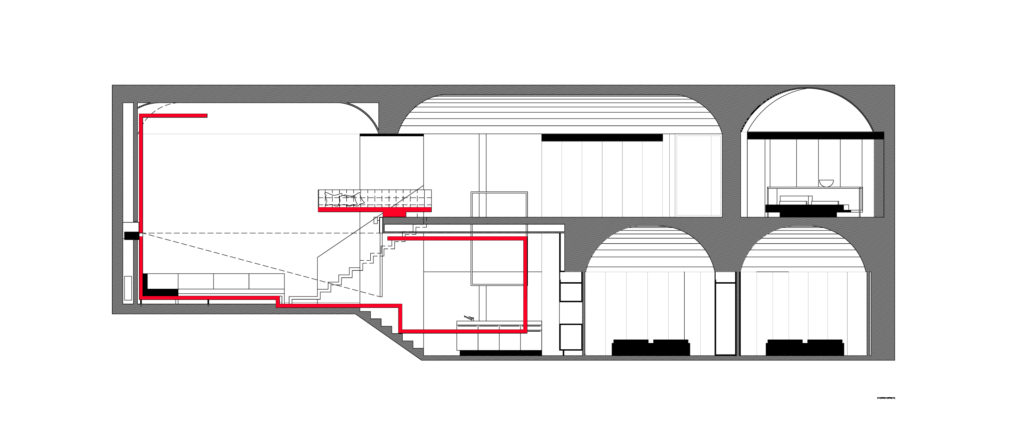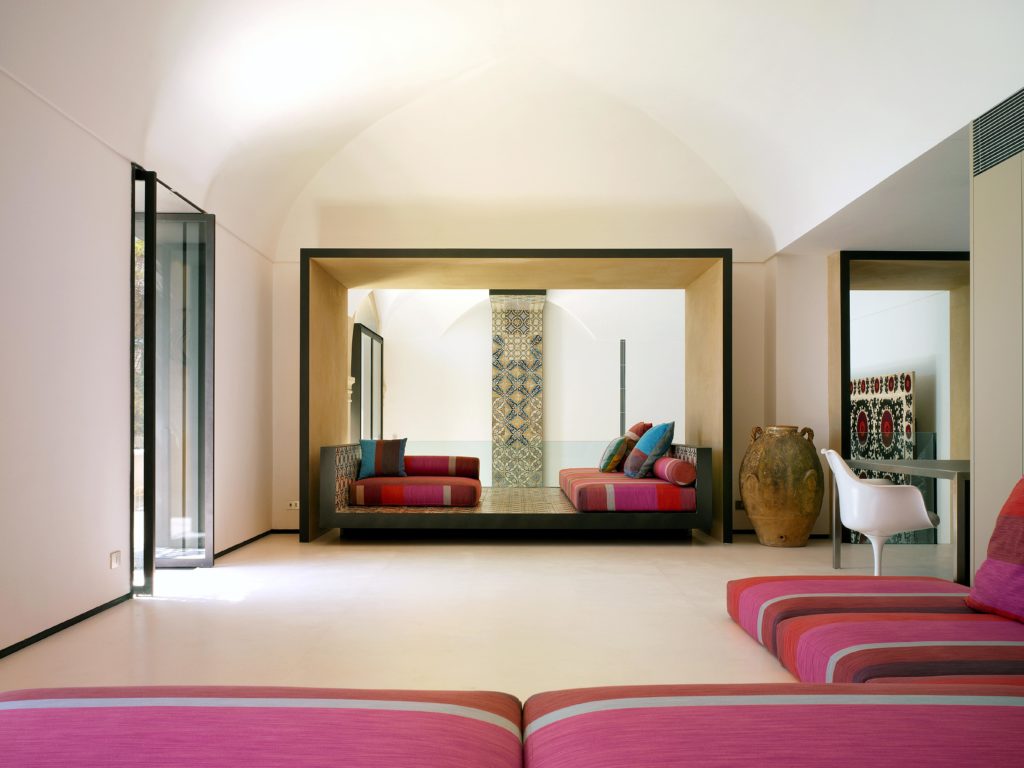VILLA IN POSITANO
Italy [2002-2004]
LPA Collaborators: Andrea Biondi, Barbara Fragale, Isabelle Berney, Michael Clarke, Sara Nussberger, Michael Stahlmann
Photo Credits: Matteo Piazza
The true protagonist of this project is a collection of antique ceramics from Vietri, entrusted with the role of exalting the particular elements that make the famous Villa in Positano a contemporary architectural masterpiece. The harmonious composition of hand-painted ceramic tiles, the great passion of the villa’s owners, wraps a long ribbon of steel like a decorative skin. The ribbon is used to articulate the double height spaces of a formereighteenth centurymonastery, linking the villa’s three levels. It begins on the ceiling, dropping down a six-meter high wall to become a shelf in the large living room on the first floor, a platform, intersecting the stairs leading to the kitchen on the ground floor. The ribbon then transforms into the dining room table, finally climbing back up toward the ceiling to house the lighting fixtures. All without any interruption. This powerful geometric element describes the essence of the Lazzarini and Pickering’s research: the transformability and flexibility of spaces and furnishings, the multiplicity of functions, the essentiality of form combined with the elegance of decoration.
“The theme of the Villa in Positano – the architects tell us – is that of a contemporary intervention in this ancient maritime city, designed to interpret its incredibly rich traditions of architecture and ornament, with their undeniable Arab influences”. The renovation included the restoration of the original width and height of the spaces of the villa and its large arched openings. The project is modulated by a landscape of contemporary elements used to articulate the original container without ever actually touching it. The continuity between spaces – linked by rectangular “O”- shaped steel frames – is another fundamental aspect of the design.
This approach is further emphasised by additional architectural elements in steel, clad in ceramic tiles that recall the ribbon: a plate cantilevering two metres into the living room, supporting a large panoramic sofa from which to admire a view of the Li Galli islands; another platform in the master bedroom supporting the bed, a bathtub and washbasin. Brightly coloured fabrics and ancient Suzani carpets adorning the walls like paintings, contrast with the white walls and floors, dialoguing with the geometric matrix of the ceramic tiles.
The same steel cornices are also used to mark the passage between interior and exterior. This decisive gesture connects the living room and with diverse levels of terraces suspended above the sea. They become hanging gardens in which to wander between lemon and fruit trees or enjoy a breathtaking view while swimming in the pool.
● 2004 – Selected for the ‘Cities on Water’ section in the 9th Venice Architecture Biennale – VILLA IN POSITANO







































